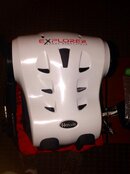darushin
Contributor
I don't understand rebreather certification. I thought you were trained by an instructor certified by the manufacturer, not an agency.
PADI can certify someone for the Explorer, but they then can't pack their own scrubbers? But if you take a TDI course, you can? Do scuba police enforce this?
Sorry for the remedial procedural questions.
Hello Matt, you're actually asking very reasonable questions.
As for how rebreather instructor ratings are issued: this is done by an Instructor Trainer that has been qualified by the training agency to train instructors. In many cases, the manufacturer is part of the process and gives the final OK for the instructor to be issued the rating on that rebreather.
As for the scrubber packing, I can only speak for TDI. But yes, in the TDI Explorer Rebreather Course, the student is trained in how to pack their own scrubber. There are no "scuba police" that would reprimand someone for packing their own scrubber if their qualifying agency does not allow it, however I would not recommend doing something that you have not been trained to do (especially if it could cost you your life if done incorrectly).
I hope this answers some of your questions.
---------- Post added August 2nd, 2013 at 12:55 PM ----------
In order to be considered a type-r rebreather by padi I think it must have a pre-packed scrubber and a BOV amongst other things. I think TDI is happy with just BOV.
Daru
Daru,
TDI does not qualify rebreathers as "technical" or "recreational".
That is correct, the distinction it's currently with padi. It was more for showing the different requirements between the two agencies since a padi type-t rebreathers have a different set of requirements then a type-r




